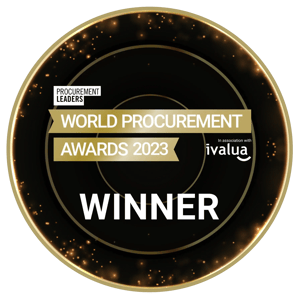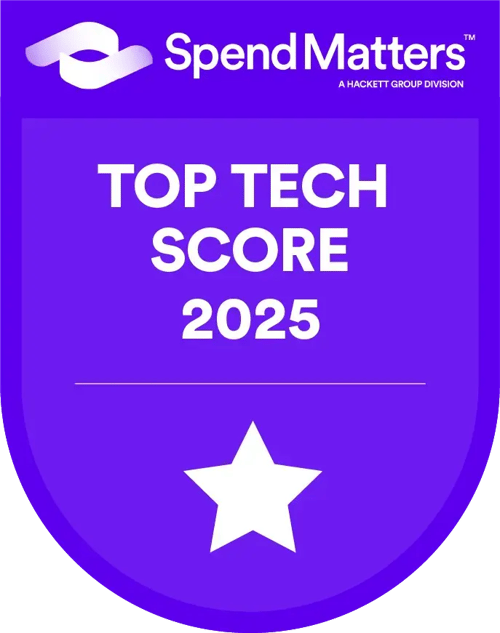In the Sievo webinar titled "Driving Procurement Decision Orchestration: How Agentic AI is Changing Procurement", procurement leaders gained valuable insights into the revolutionary potential of agentic AI – the next frontier beyond traditional generative AI systems that have dominated headlines in recent years.
Let’s go over some of the key highlights from the webinar!
Here’s a fact: In 2017, a McKinsey survey found that advanced AI capabilities like coordinating multiple agents would be an expected reality around 2047. 5 years later, when the study was recreated, those same capabilities were expected by 2028 – a staggering acceleration of 15 years!
This acceleration sets the stage for a fundamental shift in how procurement teams operate, making it critical for organizations to understand and prepare for the agentic AI revolution.

Access the full webinar recording!
The Characteristics of Agentic AI
“Analytics has been about dashboards, but the challenge with the dashboard is that it still requires a lot of human input to figure out what's important and find the insights and drive action,” said Sammeli.
Unlike earlier AI models that simply responded to prompts, Agentic AI represents a quantum leap forward with four key characteristics:
- Goal-oriented behavior - The AI understands objectives and works toward them
- Adaptability - It can adjust its approach based on changing circumstances
- Proactive and autonomous functioning - It takes initiative without constant human direction
- Integration with different online services - It can access and leverage multiple systems

Read our AI in Procurement Guide for a full overview of AI use cases in Procurement
Unlimited Productivity
One of the most profound insights from the webinar was how Agentic AI could eliminate the traditional need for prioritization in procurement.
Historically, procurement teams have had to focus their limited human resources on high-value suppliers and categories, often neglecting the "long tail" of smaller opportunities that collectively represent significant value.
"In some ways, I see that the era of prioritization is over. With these new kinds of tools, you can actually act on all of your spend, all categories, all suppliers, all locations. [...] if the process cost goes to 0, you can have as many suppliers as you want, at least from the process cost point of view," said Sammeli.
This shift from selective to comprehensive action promises to unlock enormous value by addressing opportunities that were previously ignored due to resource constraints.
Event-driven procurement
When you can automate almost all actions, Procurement strategies don’t become quarterly or yearly. They are optimized daily.
“Event-driven” means that any supply chain disruption (tariffs, natural disasters, wars, etc.) can be reacted to with a workforce of AI agents at a speed that barely affects business as usual. So, procurement strategy is fluctuating with a series of events rather than following the calendar.
This could happen through 3 key levers:
Transparent Supply Chains: near real-time visibility into supply chains through constant cost benchmarking, satellite surveillance of suppliers' manufacturing locations, continuous supplier sentiment analysis from communications, extended visibility into n-tier suppliers, etc.
Agile Procurement Processes: continuous optimization, allowing procurement teams to respond immediately to market changes, disruptions, or opportunities.
Autonomous Supplier Interactions: the shift from human-to-human interactions to human-bot and, ultimately, bot-bot discussions, dramatically reducing the cost and increasing the speed of supplier communications.
The Procurement Decision Orchestration Center
In the traditional procurement model, analytics systems served primarily as passive repositories of information. Procurement professionals would consult dashboards, interpret the data themselves, and then manually initiate actions through various disconnected systems – from sourcing platforms to contract management tools to supplier communication channels. This human-centric approach limited the scope of opportunities that could be addressed.
The "Procurement Decision Orchestration Center" fundamentally reimagines this workflow. As illustrated in the webinar presentation, AI is the connective tissue of procurement operations.

The architecture of this new approach features:
- Bidirectional data flows with transactional systems (ERPs, P2P platforms)
- Direct communication channels with suppliers
- Integration with process systems (Source-to-Contract platforms)
- Connections to other business systems and stakeholders
What makes this truly powerful is that the AI doesn't just analyze and recommend – it takes action. The result is a dramatic reduction in the cost and time required for procurement activities, allowing organizations to address opportunities that were previously ignored due to resource constraints.
- For strategic suppliers and high-value decisions, it enhances human decision-making by providing comprehensive analysis and recommendations.
- For core suppliers, it proposes actions that humans can approve with minimal effort.
- And for tail suppliers and routine decisions, it can operate autonomously, negotiating directly with suppliers and executing actions without human intervention.
All while everything is managed through a Decision Orchestration platform.
Demonstrating Sievo IQ
The webinar included a demonstration of Sievo IQ, and laid out Sievo’s approach to AI:
- Processing more data, faster - Automating classification, normalization, and enrichment tasks
- Finding insights easier - Using Sievo IQ and AI-powered insights to surface opportunities
- Taking actions autonomously - Driving decisions through automated negotiation and communication
The demonstration showed how the Sievo IQ could identify payment term consolidation opportunities with non-strategic suppliers and then autonomously negotiate improvements via the Pactum integration - drafting an email to the supplier!

This capability allows procurement professionals to focus their attention on strategic relationships while AI handles routine negotiations – a perfect example of how agentic AI complements rather than replaces human expertise.
Preparing for the Agentic AI Future
The webinar concluded with practical advice for procurement leaders preparing for this transformation:
Data Strategy is Critical
Organizations need a comprehensive data strategy that encompasses not just structured transaction data but also unstructured internal information like emails, meetings, contracts, and specifications.
Embrace AI for Knowledge Acquisition
The presenters noted that procurement knowledge that once took years to develop can now be accessed instantly through AI. This democratization of knowledge means procurement professionals need to evolve their value proposition beyond category expertise.
Focus AI Investments Strategically
Organizations should build AI solutions only for core business-specific needs and buy everything else, avoiding the trap of treating all AI as so strategic that it must be developed internally.
Target the Long Tail
The greatest value from agentic AI will come from automating decisions and actions that aren't being addressed today due to resource constraints.
A Historic Transformation
The webinar painted a picture of procurement at a historic inflection point. Organizations that embrace this change and develop strategies to leverage Agentic AI will gain unprecedented capabilities to turn insights into actions.
The future of procurement has arrived, and it's powered by intelligent agents working alongside human experts to orchestrate decisions at a scale and speed previously unimaginable.
Watch the full webinar to dive deeper into Agentic AI:



